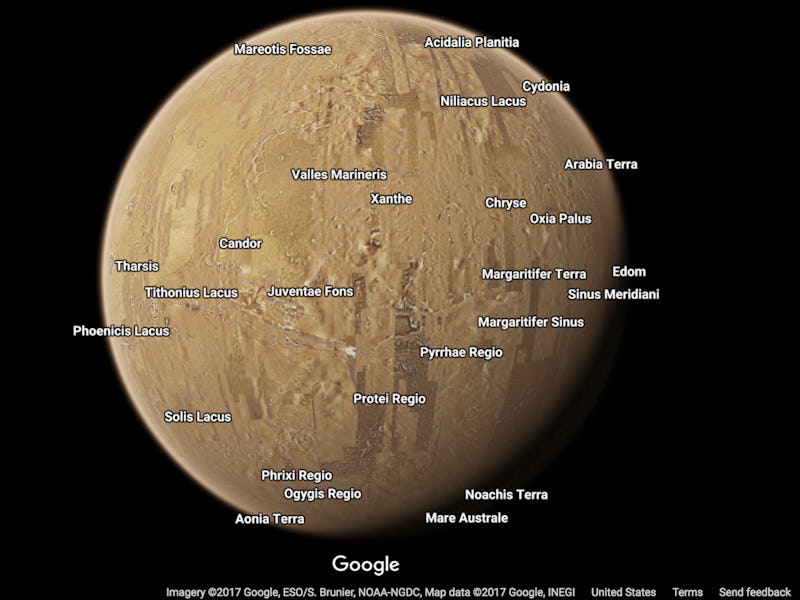Discover Planets and Moons in Amazing Detail with New Google Maps Feature
Explore the craters of Venus and all the moons of Saturn.

Google Maps has added a dozen planets and moons to its interface so users can explore more of space without ever leaving their home.
Google announced Tuesday it partnered with NASA and the European Space Agency to be able to generate the new detailed maps of Venus, Pluto, and many of Saturn’s moons. One of the notable sources Google took images from was the spacecraft Cassini, which took hundreds of thousands of pictures during its 20-year lifespan and journeys to Saturn.
Images were previously available on Google Maps of only Earth, the Moon, Mars, Mercury, and the International Space Station, a Google spokesperson told Inverse. If you zoom in enough, you can see the various surface features — and their names — on each planet and moon.
This new feature can be hard to find if you don’t have a direct link. Just go to Google Maps and zoom out (using the minus sign) as far as you can until you can see the entire planet Earth. Toggle to “satellite view” in the left hand corner. If you’re all the way zoomed out, a list of planets and moons you can explore will automatically pop up on the left side of the screen.
It should look like this:
After zooming all the way out from Earth in satellite view, this is what your screen should look like.
Make sure you check out the International Space Station, which Google Maps has provided images of since July. You can explore images inside the ISS from the perspective of a European astronaut who spent six months there.
It may be difficult to navigate the planets and moons since Google Maps doesn’t provide a search tool for space, but it’s worth playing around to see what you might be able to find. Parts of Mars are especially detailed because of the images NASA’s rovers have taken on the planet’s surface. There are some limits on how much you can zoom and how much you can spin the planets around, but the views are definitely nothing like you’ve ever seen before.
If you liked this article, check out this video of what it looks like to land on Saturn’s moon Titan.